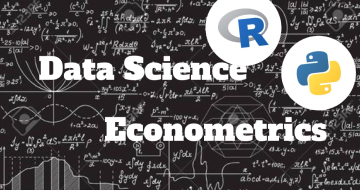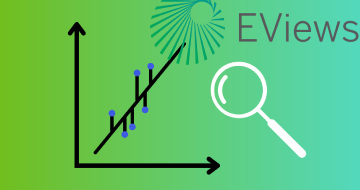IIRF Online > Finance & Accounting > Economics > Econometrics > The Econometrics of Time Series Data
The Econometrics of Time Series Data by Coursera
Course Highlights
- How to estimate the various model with R
- How to check that the models are statistically valid with R
- How to use the various models for decision making
Skills you will learn!
Curriculum
23 Topics
Welcome to Use and Applications of Econometrics
Time Series Observations
Detrending Time Series Data
Memory and the Autocorrelation Function
Holding Constant the Intermediate Coefficients
Time Series Data and Correlation through Time
The Problem of Detrending
Theory of Autocorrelation Function
Building the Autocorrelation Function
Testing for Statistical Significance of the ACF
The Theory Behind Partial Autocorrelation Function
Knowledge Check: Time Series Data
Understanding the the Role of History
Understanding Difference in Time Series Data
Understanding Detrending
Understanding ACG and PACF for Different Economies
The Role of History
Difference in Time Series Data
Wrong Detrending of a Random Walk and of a Deterministic Trend Series
ACG and PACF for Different Economies and Memory
Generate Different Time Series Data Using R
Detrending with R
Estimate the Autocorrelation Function with R
21 Topics
Models for Time Series
Examples of Stationary Time Series Processes
How Can We Use Econometrics for Forecasting?
The Impact of Shocks on the Dynamics of the Series
Modelling Variables Over Time
From the Theoretical ACF to the Specification of the Empirical Model
Forecasting with Econometrics
Producing Forecasts with Econometrics
Are Our Forecasts Accurate?
A Special Case in Time Series Modelling
Knowledge Check: Stationary Time Series Models
MA(2) Process
Understanding the Information Criteria to Use
Autocorrelated Residuals
Understanding the Limits of Forecasting
Understanding the Impact of Shocks on the Behaviour of the Series
What Information Criteria to Use?
Limits of Forecasting
Using R for Stationary Time Series Models
Using R for Time Series Processes
Generating Data Using R
19 Topics
The Issue of Memory in the Data
Test for Unit Root
Spurious Regressions
Cointegrated Variables
Why is it Important to Deal with Non-Stationary Data?
The Dickey and Fuller Test
Why are Spurious Regression Problematic?
Cointegration as Long Run Relationship
Knowledge Check: Non-Stationary Time Series Models
Understanding Non-Stationary Data
The Dickey and Fuller Test at Work
Understanding the Problems with Spurious Regressions
Understanding Cointegration
Non-Stationary and Stationary
Problems with Spurious Regressions
Non-Stationary Time Series with R
Testing for Stationarity with R
Estimating a Regression Model with R
Hypothesis Testing with R
21 Topics
Changing Volatility
Modelling Volatility ARCH Models
Modelling Volatility GARCH Models
Modelling Volatility Extensions of the GARCH Models
Some Characteristics of Financial Markets
Modelling and Testing for the ARCH Effect
From ARCH models to Generalised ARCH model: GARCH
Non-Linear Models and GARCH
Knowledge Check: Models for Changing Volatility
Understanding the Value of Modelling the Variance
Understanding Problems with ARCH(q) Models
Understanding GARCH and ARCH
Understanding the Characteristics of the Data
Drawing Conclusions on the Fit ARCH(1) ARCH(2) and GARCH(11) Models
Modelling the Variance
Problems with ARCH(q) Models
GARCH versus ARCH
An Exercise with R
Estimating the ARCH with R
Estimating the GARCH with R
Assessing the Fit of ARCH(1) ARCH(2) and GARCH(11) Models

The Econometrics of Time Series Data






